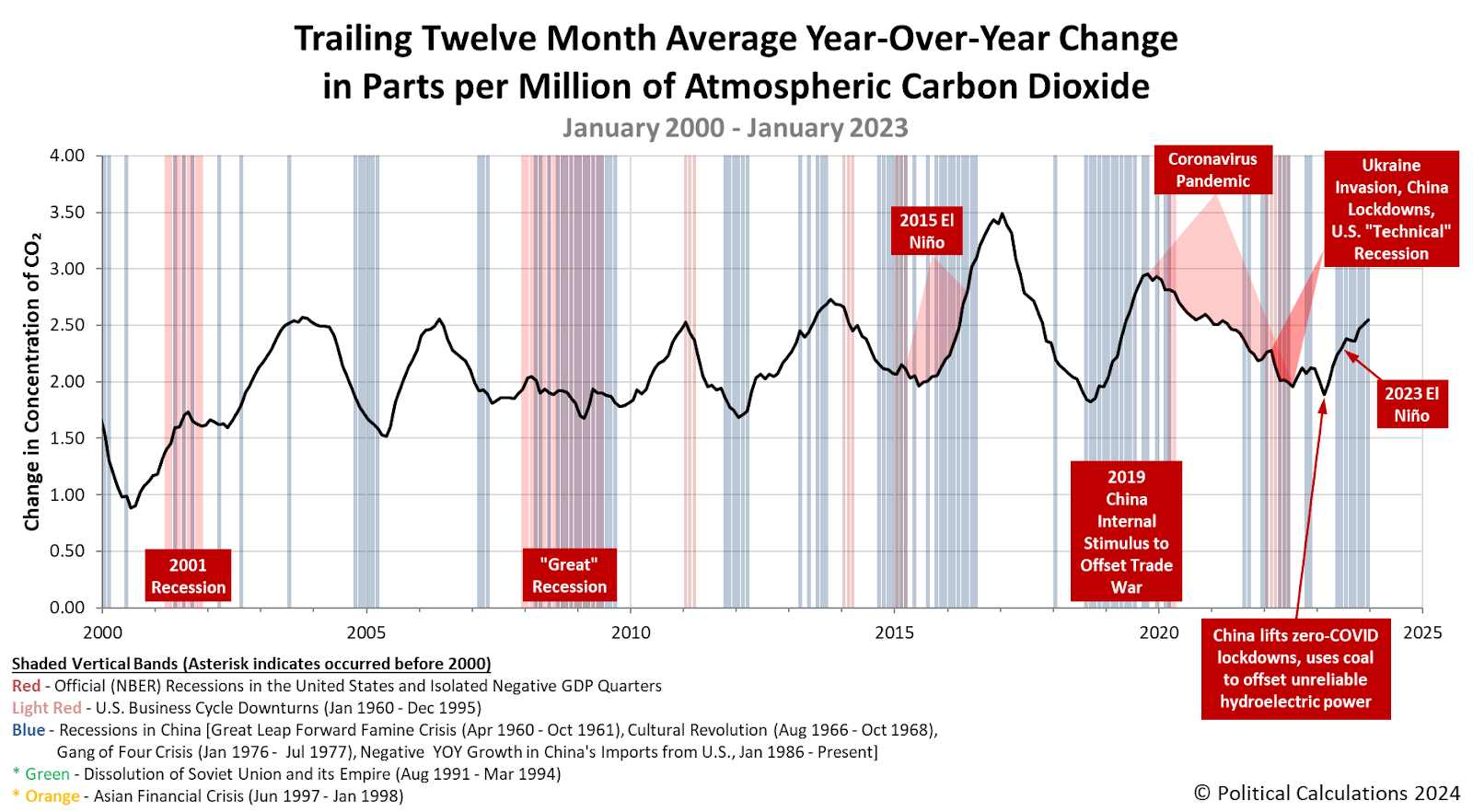Atmospheric CO2 Increases With Chinese Coal-Fired Emissions
The pace at which the concentration of carbon dioxide increases in the Earth's atmosphere rose again for the sixth consecutive month in February 2024.

Since last bottoming in February 2023, the trailing twelve month average of the year-over-year change in the parts per million of CO₂ being added to the Earth's air has increased by 58%, rising from 1.89 ppm to 2.98 ppm. Only the months of August and September 2023 have seen a small pause in that otherwise upward trend.
That trend continues to be dictated by China's emissions of carbon dioxide, which is primarily produced by its coal-fired power generation plants. China is, by very large margins, the worlds's biggest consumer of coal and the world's biggest producer of carbon dioxide emissions.
China's emissions of CO₂ have generally been on the upswing since the nation ended its zero_COVID lockdowns at the end of 2022. Those emissions have generally reflected the Chinese economy's performance under China's government's ongoing efforts to stimulate the nation's economy during 2023.
The following chart shows the trends for the increasing emissions of excess carbon dioxide into the Earth's atmosphere from January 2000 through February 2024.
China remains on track to replace the United States as the world's historically largest emission source of excess carbon dioxide in the atmosphere before the end of the 2020s.
That accomplishment is likely given that China's internal coal production hit a new record high in 2023 as the country also boosted its imports of coal to support its growing appetite for electricity.
China continues to rely on coal and coal-fired power generation to meet its growing power demand, and despite being the world's top investor in solar and wind capacity, it also plans a lot of new coal-fired electricity capacity.
During the first half of 2023 alone, China approved more than 50 GW of new coal power, Greenpeace said in a report this year. That's more than it did in all of 2021, the environmental campaign group said.
That continuing expansion has real consequences. Earlier this month, China's government backed off its official five-year target for reducing the carbon intensity of its economy.
“China is effectively admitting its failure to fulfill the five-year target,” Li Shuo, director of the China Climate Hub at the Asia Society think-tank, told Climate Home. “This year’s target is even more modest than the average rate of reduction needed, while they should be playing catch up.”
Lauri Myllyvirta, a senior fellow at the Asia Society and co-founder of CREA, said that China is “basically admitting defeat” with this “very important metric”.
“The [2.5%] target is completely inadequate to get China back on track towards its 2025 goals,” he added. “It is very alarming that the government is not articulating a plan on how they are going to hit an internationally-pledged target.”
China's coal consumption is now projected to peak in 2026. Assuming China's government doesn't continue to back away from its pledges to reduce its use of coal and other carbon-based fuels.
References
National Oceanographic and Atmospheric Administration. Earth System Research Laboratory. Mauna Loa Observatory CO2 Data. [Online Data]. Updated 5 March 2024.
More By This Author:
Politics And Trade In 2024Sand Piles And Herd Behavior In The Stock Market
S&P 500 Looking To Gain Footing Near Record High
Disclosure: Materials that are published by Political Calculations can provide visitors with free information and insights regarding the incentives created by the laws and policies described. ...
more



